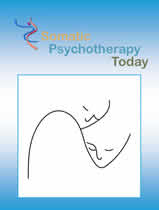Writing as a Way of Healing: How Telling Our Stories Transforms Our Lives
“Writing has helped me heal. Writing has changed my life. Writing has saved my life.” These powerful first sentences of Louise DeSalvo’s Writing as a Way of Healing: How Telling Stories Transforms Our Lives immediately conveys the author’s strong belief in the curative power of writing. She posits that writing helps people recover from “thorny experiences” and can help heal those suffering from a variety of situations, from dislocation and violence to rape and racism (4). DeSalvo is a professor of English and Creative Writing at Hunter College and is the author of over a half dozen books, so her advice is rooted in her own personal experience using writing as an instrument of healing.
Doctored: The Disillusionment of an American Physician
Doctors generally begin their journey as eager medical students determined to change the world one patient at a time. With intelligence, compassion, and a desire to help others, medical students muster up enough drive to fight through medical school and residency, accepting the hours of work, sleepless nights, and giant holes left in their bank account in pursuit of what they believe to be a worthwhile, fulfilling profession both morally and economically.
However, in Doctored: The Disillusionment of an American Physician, Sandeep Jauhar suggests that it’s difficult to maintain this view within the current medical climate because it’s dominated by the government and large corporations set out to generate income, even if it’s at patients’ expense. In this powerful and thought-provoking memoir, Jauhar utilizes case studies and anecdotes as he reveals his journey as a doctor facing what he refers to as “the midlife crisis in American medicine” and his attempts to understand why “medicine today is as fraught as it’s ever been” (15).
Lance Takes a Fantastic Somatic Journey
“Ahhhgh!” Lance moaned as he slouched stiffly on the couch on an airy summer day.
He stretched his legs past the edge of the table, rubbed his right thigh. Lance groaned. “I’m a mess. The two little ones were crawling all over me this morning, bumping every inch of me that’s bruised. I had to get up and get all of them breakfast, but my body hurt so bad I wasn’t sure I could even move.”
A married father of three and a martial artist in his mid-thirties, Lance is tall, tan and robust looking, an appearance that belies his current physical discomfort.
“What’s happened to make you so sore, Lance?”
“My physical therapist says its bursitis in my muscles. It’s because of my damn job.” Lance, advertises his frustration with a loud, drawn out ‘jawwwb.’ “They have me blasting in a tube again! No PT is going to help me when I’m getting bashed all the time!”
Lance’s well-paying job is rather unusual. Working for a company whose contracted venues mandate sandblasting and painting in spaces where he barely fits, Lance must use Superman strength, Ironman agility and Spiderman courage to keep from being crushed against the walls and wounded by the heavy equipment he carries. Although Lance credits martial arts training for giving him the flexibility to perform this work, invariably he ends up moving around in awkward and uncomfortable positions and coming out hurt.
Intimacy from the Inside Out
Intimacy from the Inside Out (IFIO) by Toni Herbine-Blank, Donna M. Kerpelman, and Martha Sweezy is geared toward psychotherapists who are seeking an alternative method for practicing couples therapy. IFIO therapy stems from Internal Family Systems therapy (IFS), a model developed by Richard Schwartz in the 1980s as an approach to working with individuals and families, then later expanded to include couples. IFIO couple’s therapy involves a two-step process of planning for the predictable universal issues that couples face and responding skillfully to other unexpected factors. Couples entering IFIO therapy often hold the two goals of feeling safe within their relationship and reestablishing intimacy. In the initial session, the therapist meets with the couple to inquire about hopes and goals, assess their ability to accept differences in each other, and then offer a perspective on the possibilities of treatment.
Psychotherapy East & West
In Psychotherapy East & West, Alan Watts attempts to bridge the gap between Western psychological thought and Eastern ways of life. Originally published in 1961, his goal was to provide an updated perspective on Western versus Eastern psychological ideas and provoke thought and experimentation in the reader. The 2017 reprinting of this classic instills new life into Watts’ argument that using psychotherapy without an understanding of Eastern ideologies will fall short of helping one to reach a feeling of true liberation. He posited that the groundbreaking insights of influential psychologists such as Freud and Jung synthesized with the Eastern spiritual philosophies of Buddhism, Taoism, Vedanta, and yoga could liberate people from the internal struggles within themselves.
Keeping Our Bodies in the Room: The Relevance of Bodily Experience in Psychotherapy Practice...
This conference brings together two dynamic clinician-authors at the heart of the contemporary discourse on the place of the body and somatic experience in psychotherapy and psychoanalysis: William Cornell, author of Somatic Experience in Psychoanalysis and Psychotherapy (2015) and Jon Sletvold, author of The Embodied Analyst: From Freud and Reich to Relationality (2014).
The program will combine conceptual elements with discourse, clinical and supervisory examples, demonstrations of training and supervision techniques, and a good deal of experiential work drawn from the speakers' many decades as clinicians and trainers. This diversely formatted program will appeal to psychodynamic and analytic clinicians, those involved in the training and supervision of psychotherapists, and somatic psychotherapists who want to experience the clinical and training styles of these internationally-known body psychotherapy innovators.
The New Mind-Body Science of Depression
To better understand mental illness, psychiatrists have in the past looked at mental illness via a medical model. However, in The New Mind-Body Science of Depression, Vladimir Maletic and Charles Raison claim that we oversimplify major depression by looking at it as a discrete illness. As a result, we overlook the significance of research that doesn’t support that view. They suggest that the answers to many of our questions about major depression can be found by analyzing and integrating information we already have, but in the past ignored. They seek to map out how we came to view major depression as a discrete illness and provide evidence against that view. By doing so, they demonstrate that by sticking to misconceptions about mental illness, we are oblivious to important information that can provide some of the answers we’ve been searching for.
In the Darkest Places: Early Relational Trauma and Borderline States of Mind
In Into the Darkest Places: Early Relational Trauma and Borderline States of Mind, Jungian Marcus West re-declares early relational trauma as the root of psychological distress and analytic thinking. West ultimately works to develop an integrative approach to trauma analysis and therapy incorporating ideas from theorists like Freud and Jung who prioritize internal reactions to trauma and Ferenczi and Bowlby who emphasize real-world experiences. He suggests that our analytic approaches to trauma cannot be divorced from the experience itself or the individual and internal responses. Subsequently, using his integrative approach West offers a nuanced understanding of borderline states of mind.
Our Summer issue is now digital
We've just posted our summer book review issue on issuu.com for those wanting a digital read of the entire magazine. We're working on embedding it on our site as well. Stay tuned for more exciting advances.
Our Annual Book Review Issue is Here
Maintaining our traditional summer focus, we are pleased to share reviews of books “hot off the press”, author reflections on their writing experience, and articles from our regular contributors. As a courtesy to our subscribers, we will email a special link to access the complete PDF. And, make sure we don't leave anyone out, we're also posting each review, reflection and article individually over the next several weeks.






